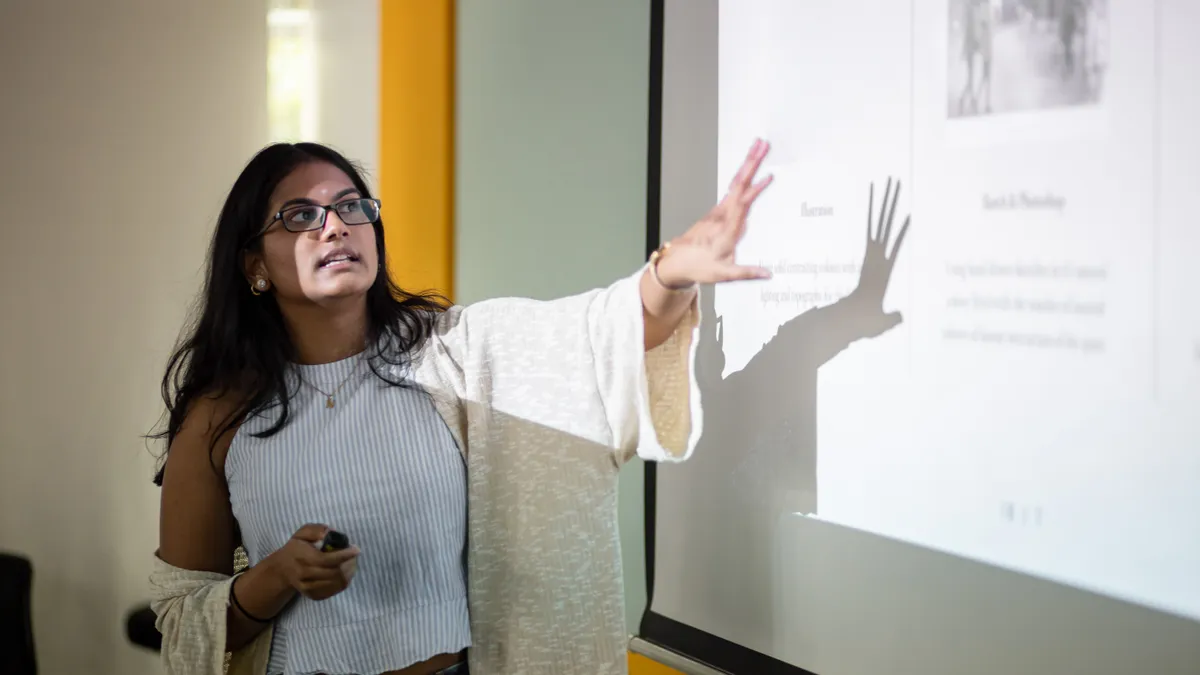Dive Brief:
- Women in full-time faculty roles are still being paid less, making roughly 82 cents for every dollar their male counterparts earn, according to the American Association of University Professors' annual faculty compensation survey.
- The average salary for full-time female faculty in 2021-2022 was $92,787, compared to the average salary of $113,331 for men.
- That gap has barely budged over the past decade or so. The year prior, faculty salaries for women were 81.8% of those for men, compared to 80.9% in 2010–11.
Dive Insight:
The higher ed sector has been pushed in recent years to reevaluate how it treats its female employees and the level of compensation and opportunities they receive for their work.
Women are consistently underrepresented in authority positions in the higher ed sector. Only one out of three college presidents is female, according to the College and University Professional Association for Human Resources. Slightly more than a third of college governing board members are women, the Association of Governing Boards of Universities and Colleges has found. And roughly a quarter of women working for colleges say their gender has hurt their career advancement, according to Gallup research.
Despite the persisting pay gap, preliminary data shows the number of tenured female faculty members is rising, according to Glenn Colby, senior research officer at AAUP. Colby led the compensation survey and is currently working on the AAUP's larger annual report on economic trends in the higher ed profession.
"Since Title IX was enacted, the movement toward equity between men and women has been slow," Colby said. "But in some ways, it seems as though the pandemic accelerated some of that movement."
Almost 60% of full-time faculty are tenured, according to the latest compensation survey. Though tenured faculty levels have remained flat at most types of colleges since 2019-20, the portion of women faculty members who are tenured is growing faster than the percentage of men with tenure across all institution types, according to Colby.
The difference was largest among public doctoral institutions, where the number of tenured women faculty members increased 5% from 2019-20 to 2021-22. During that same period, men with tenure decreased by 0.8%.
The same thing happened at private independent doctoral institutions. Tenured female faculty increased 3.1%, compared to a 2.7% decrease for men.
Differences were smaller at other institution types, but the trend persisted, according to Colby. He said that the number of male full professors is still much greater than the number of female full professors, but the gap has closed faster the last couple of years.
"I don't necessarily think it means that universities are going out and hiring more women," Colby said. "I think that men are retiring."
He speculated that colleges may be offering early retirement programs as a way to reduce staff and cut costs.
"We didn't collect the ages of people leaving," Colby said. "But the most senior faculty entered the field when it was mostly men, back in the day."
This brief has been updated to correct a statistic on the percentage of faculty with tenure.
















